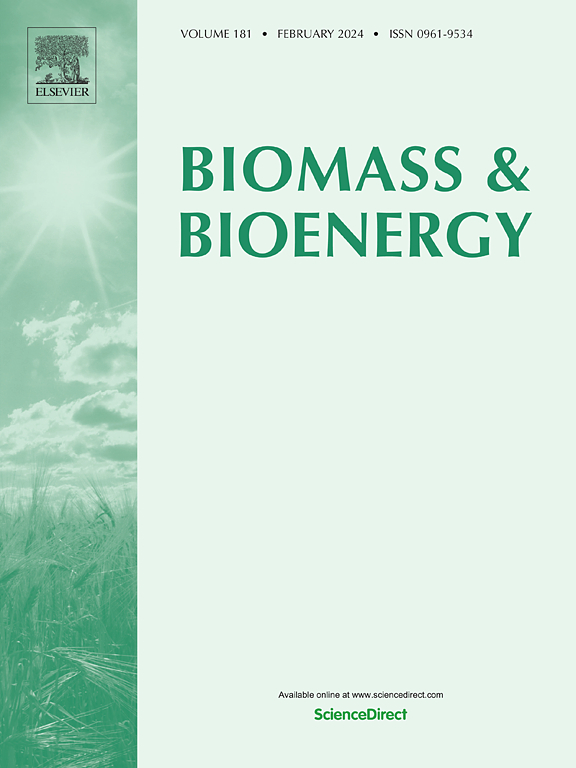Enhanced glucose conversion to formic acid with deep eutectic solvents-mediated bimetallic oxides: Morphology and valence state regulation
IF 5.8
2区 生物学
Q1 AGRICULTURAL ENGINEERING
引用次数: 0
Abstract
The valorization of biomass into chemicals has emerged as an appealing approach for utilizing biomass as a renewable feedstock. In this study, a deep eutectic solvent (DES)-mediated solvothermal strategy was employed to synthesize a bimetallic nanoparticle catalyst for the conversion of glucose to formic acid. The impact of DES-based solvent systems on the morphology, valence states, and catalytic performance of the catalyst were systematically examined. Experimental results demonstrated that at the same reaction conditions (150 °C, 3 h), the catalyst prepared using DES achieved a formic acid yield of 63.63 %, significantly surpassing the 50.37 % yield obtained with catalysts synthesized through conventional hydrothermal methods. Under optimal conditions of reacting at 150 °C for 5 h, maximum formic acid yield of 65.17 % was attained with DES-mediated catalyst. Characterization underscored the crucial role of DES in promoting the construction of uniform nanospheres and in reducing the manganese valence state from +2.69 to +2.30, which serves as the primary active site. Mechanistic studies identified two main pathways governing the glucose-to-formic acid conversion: (i) a direct conversion route from glucose to formic acid and (ii) an initial isomerization of glucose to fructose, followed by the conversion of fructose into formic acid.

求助全文
约1分钟内获得全文
求助全文
来源期刊

Biomass & Bioenergy
工程技术-能源与燃料
CiteScore
11.50
自引率
3.30%
发文量
258
审稿时长
60 days
期刊介绍:
Biomass & Bioenergy is an international journal publishing original research papers and short communications, review articles and case studies on biological resources, chemical and biological processes, and biomass products for new renewable sources of energy and materials.
The scope of the journal extends to the environmental, management and economic aspects of biomass and bioenergy.
Key areas covered by the journal:
• Biomass: sources, energy crop production processes, genetic improvements, composition. Please note that research on these biomass subjects must be linked directly to bioenergy generation.
• Biological Residues: residues/rests from agricultural production, forestry and plantations (palm, sugar etc), processing industries, and municipal sources (MSW). Papers on the use of biomass residues through innovative processes/technological novelty and/or consideration of feedstock/system sustainability (or unsustainability) are welcomed. However waste treatment processes and pollution control or mitigation which are only tangentially related to bioenergy are not in the scope of the journal, as they are more suited to publications in the environmental arena. Papers that describe conventional waste streams (ie well described in existing literature) that do not empirically address ''new'' added value from the process are not suitable for submission to the journal.
• Bioenergy Processes: fermentations, thermochemical conversions, liquid and gaseous fuels, and petrochemical substitutes
• Bioenergy Utilization: direct combustion, gasification, electricity production, chemical processes, and by-product remediation
• Biomass and the Environment: carbon cycle, the net energy efficiency of bioenergy systems, assessment of sustainability, and biodiversity issues.
 求助内容:
求助内容: 应助结果提醒方式:
应助结果提醒方式:


